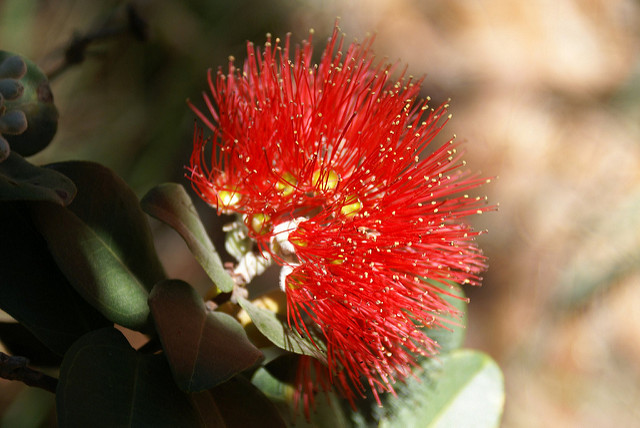Submitted by ROrritt on 17 October 2017

Thousands of ʻōhiʻa trees have been destroyed by ‘Rapid ʻōhiʻa Death’ (ROD), a disease caused by the fungus Ceratocystis fimbriata, in Hawaiʻi. The disease is a key example of the extent of damage that fungal pathogens can cause, even outside of the animal kingdom.
Crowns of affected trees change from their characteristic fiery red colour to yellowish, and then brown within a few weeks. Aerial surveys conducted this year have shown the extent of disease spread, with around 75 000 acres of forest affected.
Humans are thought to be the main culprit for disease transmission, as moving infected wood and contaminated tools, gear and vehicles between forests can accelerate the spread of fungal spores. The non-native ambrosia beetle also plays a part. Attracted to dead or dying wood, the beetle creates a fine wood dust, which is blown by the wind carrying fungal spores to new sites.
In a comment for the O’ahu Invasive Species Committee website Scott Enright, Chairperson of the Hawaiʻi Board of Agriculture said “We don’t have all the answers about how the disease is transmitted. However, the urgency to stop its spread is very clear. ‘Ōhi‘a makes up 50 percent of our native forests and watershed – resources that we just cannot risk losing.”
In an effort to limit the effects of the disease, the University of Hawaiʻi at Manoa is advising residents to avoid inadvertently transmitting C. fimbriata, by not moving ʻōhiʻa wood, and cleaning vehicles and gear when leaving affected sites.
The effect of these guidelines on public awareness and action is not yet known, but there is hope that people can be encouraged to be part of the solution, and save this keystone species of Hawaiʻi’s native forests.
News archives
-
Title
Date


